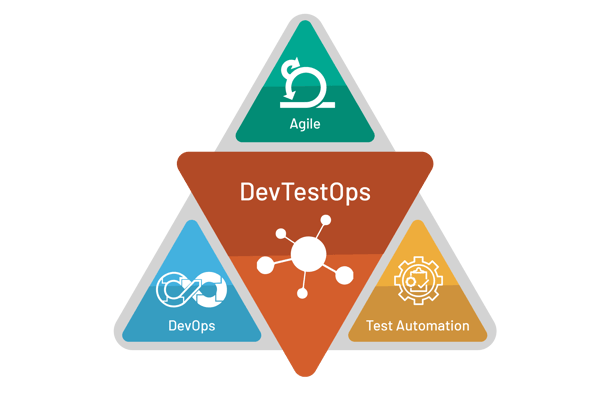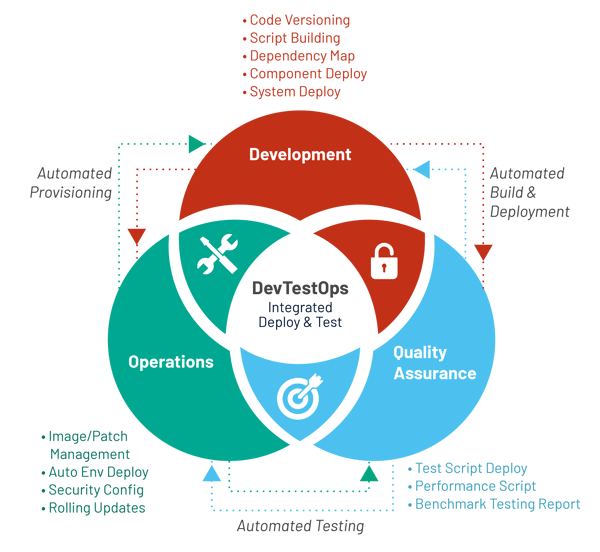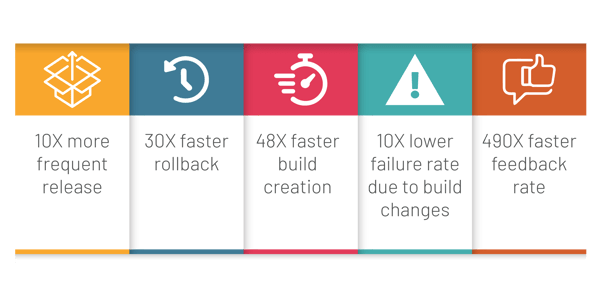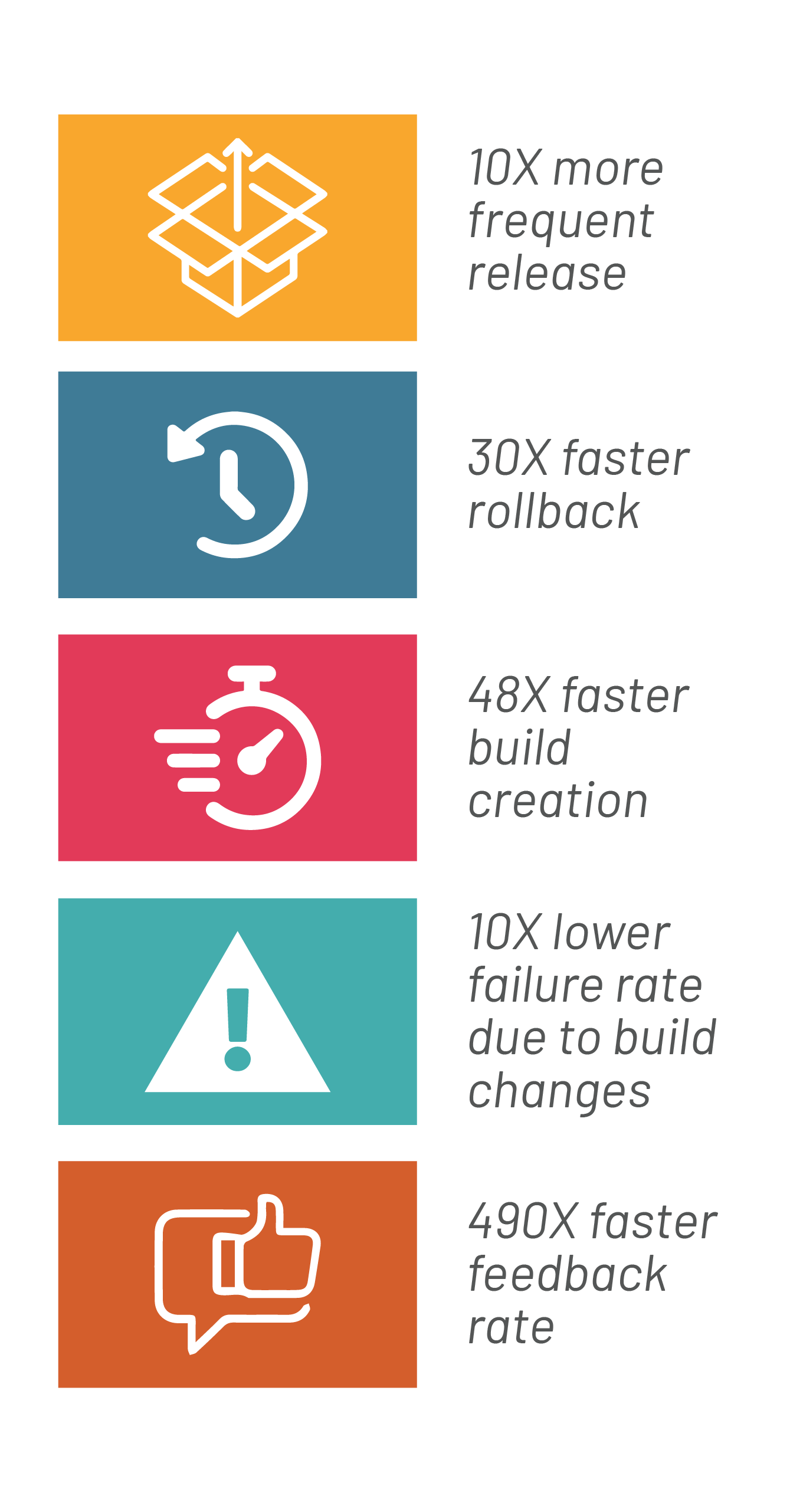Sachin Ahuja

Dev-Test-Ops is a collaboration of DevOps practices, agile methodology, and test automation; which results into faster time-to-market, lower failure rates & business risks, rapid updates & fixes, and quicker recovery from system issues.
In the past decade, the integration of agile and DevOps has led to a change in the way product development is done. Agile helps in the fastest delivery of the product by using an incremental approach with higher transparency, greater business value, and lower business risk. The goal of DevOps is to automate as many manual operations as possible in the software development process. Though successful, true success was still a bit far-fetched without considering continuous testing.
Continuous testing is a major component in the software delivery pipeline and is used mainly for implementing testing automation for getting prompt feedback on bugs, missing functionalities, and risks while delivering the software product. Continuous testing brings the ability to test the code continuously to the fore, which eliminates the “War Room” scenario by bridging the gap among testers, developers, and the operations team.

The journey from Dev-Ops to Dev-Test-Ops
Continuous testing is one of the several activities which should take place sequentially in a CI/CD pipeline. Continuous testing categorizes testing as an integral part across the Dev-Test-Ops cycle rather than a discrete entity in a project.
The successful integration of test automation into a CI/CD pipeline would ensure greater accuracy and easier shifting of the focus from DevOps to Dev-Test-Ops.
Thus, continuous testing, as an essential element of the product development process, ensures that there are no gaps in the continuous integration and delivery cycle.
Why Dev-Test-Ops?

Automated build & deployment accelerates time-consuming activities such as build creation, which results in ensuring faster deployment, eliminating human errors, and improving transparency & auditability.
Automated deployment reduces the effort of deploying the product in different environments with the help of several deployment servers:
- On-demand deployment
- Scheduled deployment
- Triggered deployment
Test automation accelerates testing to match it with the agile-paced DevOps environment and to shorten the regression testing schedule from weeks to hours or minutes. It is the best way to increase the effectiveness, efficiency and coverage of software testing. Automated tests can be run repeatedly at no additional cost, and they are much faster than manual tests.
Automated provisioning offers on-demand computing capacity with the aid of pre-defined procedures and by disposing of the manual processes. It provides a platform for managing dynamic resource allocation throughout the organization, minimizing revenue outpouring, and facilitating faster product development.
Dev-Test-Ops culture at Nagarro
Nagarro’s flexible project squads are always ready to take on new challenges, and they have adopted the Dev-Test-Ops culture rapidly. The Dev-Test-Ops pipeline model was deployed across several projects in different domains, to make an effective product development life cycle which helps us to achieve the following:


The best practices we follow to utilize the processes are shared here:
- Configure CI tools to automate build & deployment processes and to support single-click deployment for various projects. Automated scripts also generate documentation, website pages, reports, and distribution media along with the compiled binaries.
- Automate everywhere. As human beings are slower and more likely to make mistakes accidentally, it is essential to automate the processes to maximize the speed and minimize the errors. Automate everywhere not only includes testing but also the integration, build and deployment processes. At Nagarro, the release methods are 100 percent automated.
- Make the build self-testable by linking the test automation suite to the CI/CD pipeline, so that the testing starts by itself once the code is built to confirm the functionality according to the requirement and specification.
- Notify an individual about the build changes. The CI server is shaped in such a way to make it easier to find the build breakage and, if so, who made the relevant change. It also helps in effective communication between the three pillars – Development, Testing, and Operations teams.
- Progressive test automation is focused rather than regressive to adapt to the speed of development in agile. Progressive automation is automating almost every test case instead of executing manually.
- Each type of testing is included in the continuous testing approach:
- Performance/Load Testing
- Security Testing
- Cross-browser Testing
- Multi-platform Testing
- Responsive Testing
- API Testing
- Testing framework is robust and flexible to absorb different requirements from different customers and offer rapid development of the automated test cases with lower maintenance in the least possible time frame.
- Adding a new flavor of ML/AI in our test automation framework would contribute to:
- auto-healing of the test cases by updating the test case and object repository when any changes are done on GUI.
- running test cases as per build changelogs.
- setting the severity and priority of the bugs based on the browser logs and verification.




